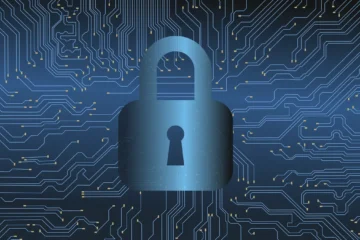CatB Ransomware Targets Big Game
CatB Ransomware is a new strain of malware that has been targeting the video game industry. This ransomware encrypts the victim’s files and demands a ransom in exchange for the decryption key.
The attackers behind CatB Ransomware have been targeting big game companies and studios, causing significant disruptions to their operations. The victim’s data are encrypted by the ransomware, which then demands payment in exchange for the decryption key. The attackers have been demanding large sums of money, often in the form of cryptocurrency, to restore access to the encrypted files.
The video game industry has been particularly vulnerable to ransomware attacks due to the large amounts of valuable data that these companies and studios possess. This data includes sensitive information such as source code, design documents, and other proprietary information that is essential to the development and operation of video games.
One of the most notable victims of CatB Ransomware was the game development studio, CD Projekt RED, the creators of the popular game series, The Witcher. The attack resulted in the leak of sensitive company data, including source code for the studio’s upcoming game, Cyberpunk 2077.
To protect against the CatB Ransomware and other strains of malware, companies and studios in the video game industry should implement strong cybersecurity measures. This includes regular backups of important data, implementing robust network security, and providing employee training on cybersecurity best practices.
Additionally, companies should have incident response plans in place in case of a cyber attack, including incident response teams and procedures for reporting and responding to security breaches.
In conclusion, the CatB Ransomware is a serious threat to the video game industry and companies should take proactive steps to protect themselves from this and other strains of malware. With the increasing use of technology in the game development, it’s important for companies to understand the risk of cyber-attacks and take necessary action to protect themselves and their customers.
Here are a few more details about CatB Ransomware:
- The malware is delivered via phishing emails and exploit kits, which trick victims into downloading and installing the malware.
- Once the malware is installed, it encrypts the victim’s files and adds the “.catb” extension to the encrypted files.
- The attackers then demand a ransom in exchange for the decryption key, which is required to restore access to the encrypted files.
- CatB Ransomware is considered to be a highly sophisticated strain of malware, as it uses advanced encryption methods and evades detection by anti-virus software.
It’s worth noting that paying the ransom is not a guarantee of getting the decryption key and files back, and also it’s illegal in some countries. Moreover, paying the ransom may also encourage the attackers to continue their criminal activities and target other victims.
To protect against CatB Ransomware and other strains of malware
- Keep software and operating systems up-to-date
- Use anti-virus software and keep it updated
- Use firewalls and intrusion detection systems
- Practice safe email habits, such as avoiding clicking on links or downloading attachments from unknown or suspicious emails
- Regularly back up important data and keep the backups in a safe, separate location.
It’s important to keep in mind that preventing cyber-attacks is a continuous process, so it’s important to stay informed about the latest threats and take necessary action to protect against them.
A few additional pieces of information about CatB Ransomware:
- The malware is known to be distributed via phishing emails that are designed to look like legitimate communications from well-known companies or organizations. These emails may contain malicious links or attachments that, when clicked or downloaded, will install the malware on the victim’s device.
- CatB Ransomware is capable of spreading to other devices on a network, making it especially dangerous for companies and organizations that rely on shared networks and resources.
- In addition to encrypting files, the malware is also known to delete shadow copies and backups of the infected files, making it more difficult for victims to restore their data without paying the ransom.
In terms of mitigation and protection, in addition to the steps that I have previously mentioned:
- Use a reputable anti-ransomware software
- Ensure that your organization’s network infrastructure is configured to make it difficult for attackers to move laterally within your environment.
- Regularly patch and update your systems and software to prevent exploit kits from being able to take advantage of known vulnerabilities.
- Use multi-factor authentication to protect access to sensitive systems and data
- Conduct regular security assessments and penetration testing to identify potential vulnerabilities in your network.
It’s important to remember that cyber threats are constantly evolving, so it’s important to stay vigilant and keep your cyber-security defenses up-to-date. Regularly reviewing and updating your security protocols can help ensure that you are protected against the latest threats, such as CatB Ransomware.



